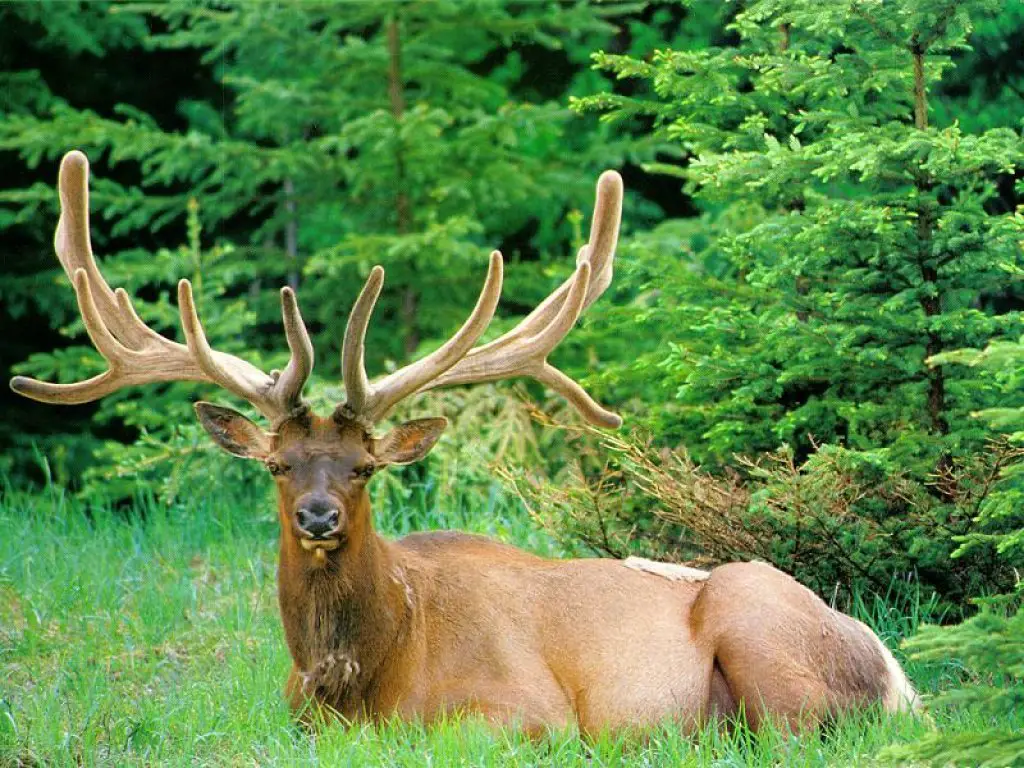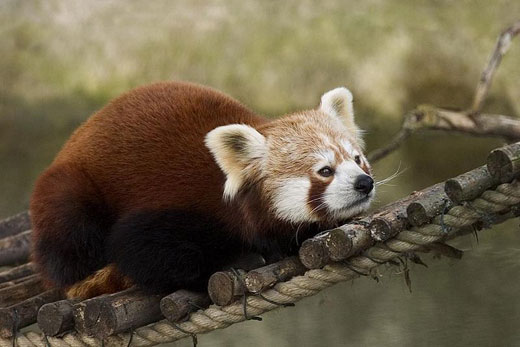Reindeer
The Reindeer, also known as Calibou in Northern America is known for it’s massive horns. Not many animals can be as resilient as the Reindeers to survive in the harsh weathers of their habitat. They are found in widely across arctic tundra regions. In these almost always cold territories Reindeers form herds, varying in size from as little as 20 individuals up to as much as 1000.
The Reindeer is the only species of deers, whose females have horns too. The horns, reaching up to 150 cm in length, are used to dig up vegetation from under the snow. Reindeers can reach up to 1.5m in height and 300 kg in weight, their fur is rather short, brownish to gray in colour, turning lighter on the stomach and on the neck. They have prominent underfur that protects them from the extreme temperatures of their natural habitat and also repels water, enabling the Reindeers to swim without any problem.
The Reindeer is a herbivore that feeds on any accessible vegetation, most often including various lichen, that grow in the arctic regions. In summer, most of its diet is composed of grass and various leaves. They have poor vision and they rely mostly on their sense of smell to find vegetation under the snow. Oddly, the Reindeers sometimes feed on lemmings – small critters that live in the tundra, under the snow.
Reindeers migrate long distances twice a year. In Spring, the smaller herds unite and collectively move to summer pastures. These massive migration herds can hold up to more than 200 thousand Reindeers. After feeding in the pastures rich with grass and other vegetation, the Reindeers migrate back to their winter shelters – the woodland areas – as soon as the first snow comes. These massive Reindeer migrations are always lead by an elderly female female, who is guarded by multiple strong males.
The mating period lasts from August to November. The males become aggressive and often fight for benevolence of the females. The gestation period is about 8 months, which means the calves are born in early summer, when the Reindeers are in vegetation-rich pastures and the newborns can feed and develop quickly, before the harsh winter months. 90% of the calves are born in June, usually it’s one calf at a time, rarely two. The calves are fed milk for 5-6 months after birth and they grow their first set of horns in a year, and reach maturity in 2-2.5 years, while their lifespan is up to 15 years. Fun fact – a Reindeer can run faster than a human 24 hours after its birth.
For many nations the Reindeer is an incredibly valuable animal – every element of a killed Reindeer is utilized in one way or another. It is also the only deer susceptible to taming and has proven to be an irreplaceable means of transport over snowy tundra areas. For these reasons, the Reindeer is the most important animal in many people’s lives and even the story of Santa Claus includes Reindeers as the helpful tractors of the sleigh.





